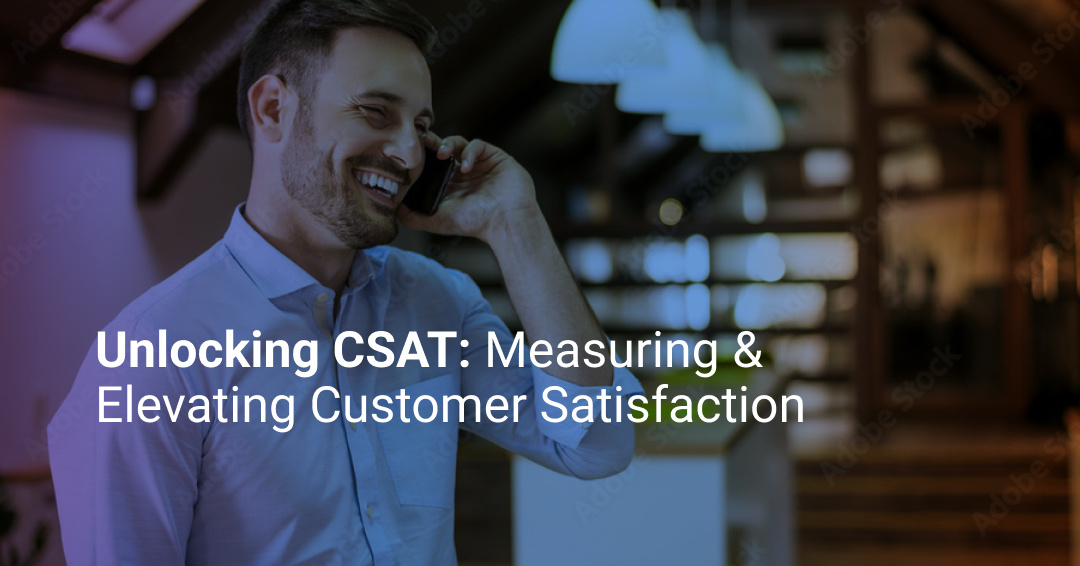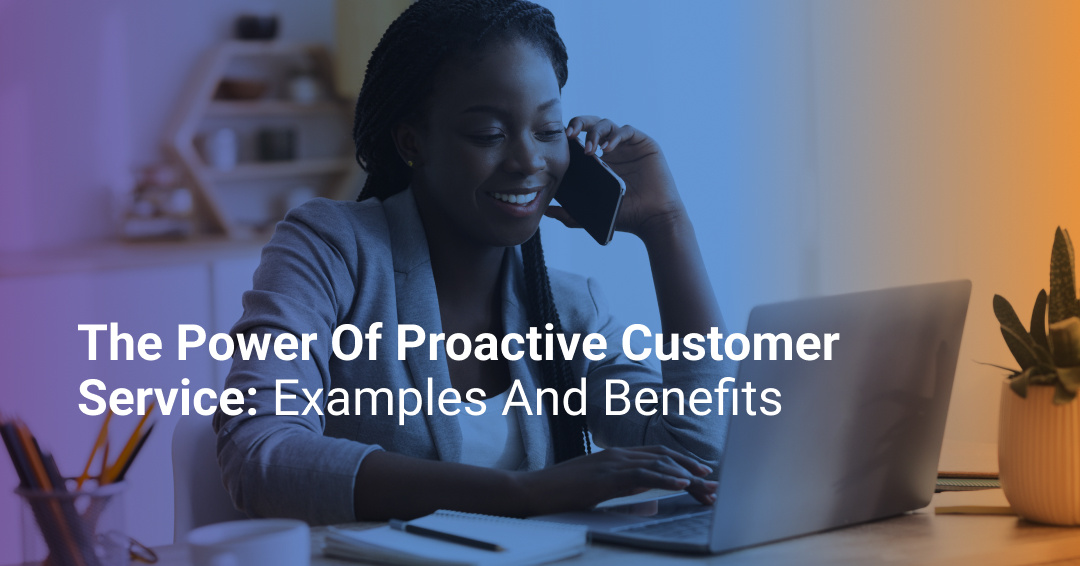12 Call Center Metrics You Should Be Using to Improve CX in 2025
Call center metrics are the most important performance indicators that monitor how effectively your call center is running. This includes anything...

Getting the right call at the right time with the right offer can make your day. Of course, getting an unhelpful, uninteresting call with an offer that does not align with your needs can be a waste of time for both your business (the one making the call) and your end users. But by having clarity and clear segmentation and understanding your customers' journeys, issues, and desires, the opposite is also possible.
Automated outbound calling done well can help businesses provide better customer experiences and make better use of agents' time, as well as help customers upgrade their current products and services in a way that makes sense to them. The question remains, though: Even if we know that automated outbound calls can be helpful, how do you know what the best solution is for your particular business?
Here, we will discuss the type of products in this industry to help you make an informed decision.
Automated outbound calling refers to the efforts any contact center makes to increase agent efficiency by helping them automate their outbound calls. As a result, agents can have more effective calls for multiple purposes, such as upselling, cross-selling, or following up on previous issues.
This process has allowed contact center agents and businesses to improve their modern communication strategies, become more efficient, and provide a better customer experience.
Automated outbound calling software works by handling multiple calls simultaneously, which can then be connected with the best available agent to improve the quality of the calls. By doing so, agents can have more control over quality conversations while keeping up a high volume of calls.
As part of the process, most technologies that do automated outbound calls are also synced with CRMs to ensure agents understand the background and journey of each person they talk to.
Multiple types of automated outbound dialers match several needs for contact centers.
Auto Dialer
This is the most common type of dialer used by contact centers, given that it can call many contacts and skip disconnected and unanswered calls. In other words, agents are only connected with successful calls, reducing idle time and increasing volumes.
Power Dialer
This system works by sequentially making calls following a list and reducing the time spent between calls. It is one of the less advanced outbound dialer types, as it focuses on helping agents meet volume quotas. However, it does not have any contextual information beyond rapidly going through the list.
Predictive Dialer
This type of dialer calls several numbers at the same time using predetermined instructions based on statistics. This method takes into account the agent’s availability and the chances of successful calls. While it can help you with large volumes of calls, it can also backfire. Sometimes, the next available agent may still be on a call, meaning the customer will be asked to hold, which can lead to hang-ups.
Preview Dialer
This method prioritizes context and information for the agents much more than other methods. Instead of just focusing on volume, preview dialers allow agents to learn more about each person they are calling before placing or skipping the call. This allows them to have more control and context and improve rapport.
Progressive Dialer
Just like the preview dialer, a progressive dialer option lets agents see the client’s information. However, this happens live and during the call, as this dialer works like a power dialer, prioritizing the speed and volume of calls first.
Contact centers that integrate automated outbound calling processes to their operations can become more efficient while also improving CX metrics. Among the many benefits, the following stand out:

Before automated outbound calling, agents managed their own outbound call schedules. While, of course, there were always top performers, it was common for contact centers to experience a dip in productivity and an increase in idle times between calls. With automated outbound calling, a machine now handles calling schedules, reducing stress on your workforce and management teams. Plus, you can segment and build outbound rules prioritizing specific clients or purposes, helping your top reps focus on more critical conversations.
There are primarily two reasons why automated outbound calling helps contact centers improve their sales performance: volume and follow-ups. With this method, agents can talk to more people without waiting for them to pick up. Plus, with the correct segmentation, contact centers can prioritize VIP calls and connect them with the most proficient reps to increase successful interactions. On the other hand, a timely follow-up on a particular problem or offer also helps contact centers close more deals by genuinely caring about their customer's issues and adapting to them at the right time. According to Zoominfo, 82% of buyers accept meetings with sellers who proactively reach out; in other words, you can have more meaningful conversations by increasing the volume and personalization of your contact center's calls.
Automated outbound technologies also help you reach more people across regions and time zones. A fully automated conversational AI partner could handle some of the calls. You can run them 24/7 as long as they match CX's best practices. For other calls where a human representative is required, automated outbound calls also help you reach wider audiences by eliminating the unconscious bias that can happen if agents are in charge of building their contact lists daily.
As we have mentioned before, reaching out to the right person with the right message in an automated way can help your CX metrics skyrocket. It is essential to clearly understand what people are trying to accomplish with your product or service and some of the problems they may be facing. Connecting these dots with timely calls, or even text messages in case people prefer them, can help you build a healthier relationship with your customers while also helping your contact center improve its overall customer experience and revenue.
Information is power if you use it. Automating your outbound calls effectively gives you access to multiple metrics that can be used in future campaigns and efforts to improve your results. You may notice that people in particular age groups or with specific products or services prefer to receive text messages instead of calls, for example. You may also see a dip in calls during the weekends because people are not paying as much attention to their phones as they do during working days. Whatever it is, by using automated outbound calls, you get access to information that can help you improve your operations and add value instead of becoming intrusive or non-helpful to your customers.
We have all been on the other end of an outbound call with very little resonance or meaning when we picked up. It happens. However, to avoid that from becoming the norm and a helpful business partner for your customers, you can prioritize the following factors to ensure great CX and increased productivity.
Not all technologies are as reliable or quality-oriented. However, knowing that there are multiple types of outbound dialers for various purposes can help your contact center connect the right tool with suitable needs, improving the quality of your outbound efforts. Automated outbound efforts also help your teams be more reliable and accountable, as their daily metrics and call volumes are no longer part of the cognitive load they have to manage.
Most automated outbound technologies integrate with CRMs and other internal contact center tools to ensure that efforts are orchestrated and user-centric. Before selecting your automated outbound provider, it is important to have a due diligence process in place to identify how well they integrate with your current tech stack. In the case of Mosaicx, we integrate flawlessly with multiple systems and CRMs to help your contact center meet its goals without adding technical debt or integration headaches.
While the contact center industry is standardized in many ways, there is still a significant degree of personalization that helps businesses in this industry succeed. An important factor that stands out in this matter is the ability to connect the correct type of agent or conversational AI with the right kind of customer and needs. While not all providers have this granular level of expertise and a CX mindset, prioritizing personalization to avoid spamming your customers is a priority.
Having a compliant and secure way to operate a contact center is a priority, especially now that customers are more aware and thoughtful about their privacy and data. An automated outbound calling solution acts as an additional layer of your contact center that ensures sensitive information, such as medical results, is appropriately handled instead of being open to third parties.
A timely follow-up goes a long way. With an automated way to handle your outbound calls, you can let go of the cognitive load of figuring out who needs to be contacted. Instead, with a CRM integration that works well with your outbound calls, conversational AI technologies and agents can reach out to the right people at the right time.
Artificial intelligence and machine learning technologies are changing most industries by adding additional effectiveness without significant overhead. The reason why this happens is because the effectiveness of an AI is much higher than the effectiveness of any other particular technology. Beyond moving and acting faster, conversational AI platforms like Mosaicx can learn from current behavioral signals to improve future performance. When you’re handling thousands of calls a day, this represents a significant improvement in successful calls and happier customers.
Given the capabilities of conversational AI technologies and outbound technologies, the amount of information you can access allows managers to better understand the daily workloads and their connection with high-level KPIs. While this is not particularly new with the integration of AI technologies, the main difference is that more advanced platforms that handle your outbound efforts also have predetermined reports. That means that instead of spending hours on a massive data set and an excel sheet, your management teams can get right to the data patterns and insights to improve operational efficiency and CX.
There are multiple types of automated outbound campaigns and purposes. However, there are a few best practices that help contact centers improve their automated outbound efforts across the board. These must be taken into account to meet your goals.

It is paramount to know precisely what you are trying to accomplish with any given outreach campaign and how it connects with a high-level KPI. Without this clarity, no amount of outbound will help your contact center improve operational efficiency. As a general rule, thinking of objectives inter-departmentally is essential to ensure multiple stakeholders are aligned before launching.
Knowing exactly who you are calling and why is the essential component that will help you have successful automated outbound campaigns. The more information you have and the more precise you have identified the problem you are solving for your customers, the easier it will be to help them.
This step ties in nicely with the previous one. Beyond segmentation, you should always keep an updated customer journey record. Using all available data from CRMs, outbound calls, and agent interactions will help your automated campaigns be more effective. In addition, it is often a good strategy to look for publicly available data if it applies to your segments to further nurture the conversation.
An essential factor to consider is making outbound calls when the audience is more receptive. While this varies massively according to the objectives, type of product and service, and segment, what matters is to include contextual information to improve timing. For example, suppose you are reaching out on behalf of a retail company with a particular offer. In that case, a Sunday afternoon call is better than a Tuesday morning call, as the customers are more likely to be interested in hearing your promo on a weekend when they are already looking to go shopping.
Following up is vital, but following up, considering the data you have collected, is a much better way to improve your outbound call efforts. While there are particular patterns and standards, different segments might start acting differently due to contextual factors. Identifying what they are and how they may affect your outbound calls can help you improve those interactions by reaching out at the best possible time.
We already mentioned the importance of compliance. Regarding automated outbound efforts, contact center leaders must ensure compliance is at the heart of all of their activities. Understanding and considering nuanced legal and regulatory guidelines is vital according to the regions and countries you operate in.
At Mosaicx, we have developed Insights360, the only analytics solution that captures end-to-end interactions from dial to disconnect and across media. Unlike other tools in the market, we track events that matter, such as time on hold, self-service interactions, transfers to a live agent, and third-party services.
Look no further if you’re looking for a partner to help you with your automated outbound calling solution. Insights360 captures the whole engagement experience and enables you to find opportunities for improvement across the interaction. That way, you can effectively reduce call volume and lower costs per call.

Call center metrics are the most important performance indicators that monitor how effectively your call center is running. This includes anything...

Businesses across industries have changed or evolved over the decades, but one thing that has remained the same is that their growth is pretty much...

Customers have several major expectations from modern businesses, but none is as challenging as them reading your mind to anticipate support you...